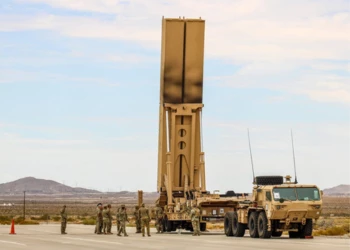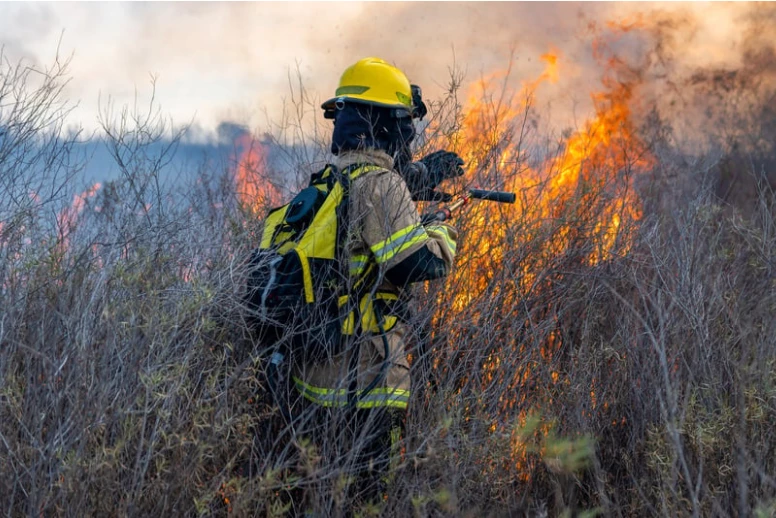White House Moves to Strengthen Drone Industry and Airspace Security
Add bookmark
Last Friday, President Donald Trump signed two executive orders focused on improving the production of unmanned aircraft system (UAS), and counter-UAS capabilities in the United States.
The first order, titled “Unleashing American Drone Dominance," commands federal agencies to accelerate the integration, commercialization, and export of U.S.-manufactured drones. While the second order, titled "Restoring American Airspace Sovereignty," directs the establishment of a federal task force and mandates new regulations and enforcement measures to counter threats posed by drones.
With one order focused on improving American drone production, and the other geared towards establishing C-UAS procedures, the Trump administration is sending a message that the U.S. is reasserting control over its airspace while simultaneously accelerating its innovation in drone technology.
In preparation for IDGA’s Counter UAS Summit, set to take place this August 19-20 in Arlington, Virginia, this article will look at how these actions from the White House will impact C-UAS policy and innovation.
For those interested in learning more about the future of C-UAS in the U.S., register for the summit today. This two-day conference will encompass high-level discussions surrounding kinetic and non-kinetic approaches for countering drones, including exploring case studies on specific incidents, insights into the latest innovative CUAS technologies, the impact of shifting legal authorities, and much more. Organizations represented at this year’s conference include the DOD, TSA, NORAD, DOJ, and state-level law enforcement agencies.
New C-UAS Task Force
In "Restoring American Airspace Sovereignty" the White House announced the creation of Federal Task Force to Restore American Airspace Sovereignty which will be chaired by the Assistant to the President for National Security Affairs (APNSA).
The task force will bring together representatives from key federal agencies to assess the risks posed by drones used by criminal organizations, terrorists, and foreign adversaries. One of its core responsibilities is to evaluate existing vulnerabilities and propose operational, technical, and regulatory solutions to mitigate those threats.
The task force is also charged with reviewing existing laws and recommending updates to strengthen enforcement capabilities, including civil and criminal penalties for unauthorized drone operations.
On top of its core responsibilities, the task force will make recommendations on actions the executive order requires from the FAA and Department of Justice (DoJ). Those actions include:
FAA – The FAA is tasked with strengthening regulatory controls over drone operations in sensitive areas. Specifically, the FAA must establish a formal process to restrict drone flights over critical infrastructure, as mandated by prior legislation. It is also required to submit a Notice of Proposed Rulemaking (NPRM) to the Office of Management and Budget and the newly formed C-UAS Task Force. Additionally, the FAA must ensure that airspace restriction data—such as Notices to Airmen (NOTAMs) and Temporary Flight Restrictions (TFRs)—is made publicly available in open formats that can be integrated into drone geofencing and navigation systems.
DOJ – The White House is directing the DOJ to intensify enforcement against unlawful drone activity. This includes prosecuting individuals who violate restricted airspace or use drones for criminal purposes. The DOJ is also expected to collaborate with the Department of Homeland Security to explore integrating counter-drone operations into Joint Terrorism Task Forces, particularly for high-risk events like mass gatherings. Furthermore, the DOJ is encouraged to support legislative reforms that would strengthen penalties and expand legal tools for addressing drone-related threats.
Brandon Youngblood is the CEO of Drone Security Services and a former manager at the FAA where he oversaw UAS Security, interagency C-UAS operations coordination and security airspace management. Youngblood is also a moderator at this year’s Counter-UAS Summit. On June 10, Youngblood joined the “This Week in Drones” podcast with Joshua Lewin to share their thoughts on the recent executive order and new task force.
“There’s currently no lead federal agency for counter-UAS, which has caused confusion and siloed efforts,” said Youngblood. “This task force could finally bring coordination and momentum, assuming it’s stood up quickly and staffed with people who’ve been in the trenches over the past five years.”
Federal Funding for C-UAS
According to IDGA’s C-UAS Market Report 2024-2029, the C-UAS market for U.S. civilian authorities is expected to grow from $106.7 million in 2025 to $117 million in 2026. However, following President Trump’s signing of the latest executive order, that market can surpass expected growth.
The latest executive order lays out a plan to increase funding for C-UAS solutions. Specifically, the order directs federal agencies to ensure that existing grant programs can be used by state, local, tribal, and territorial (SLTT) law enforcement agencies to acquire counter-drone technologies and services. This includes funding for equipment that can detect, track, and identify drones and their signals.
While the order does not specify exact dollar amounts or create new funding streams outright, it clearly signals an intent to prioritize and expand the use of federal resources for C-UAS capabilities through existing programs and infrastructure development.
“This order gives federal departments a clear direction and a framework to act. It’s a strong signal that the administration is serious about counter-UAS, and that could help shape future legislation,” Youngblood said.





















